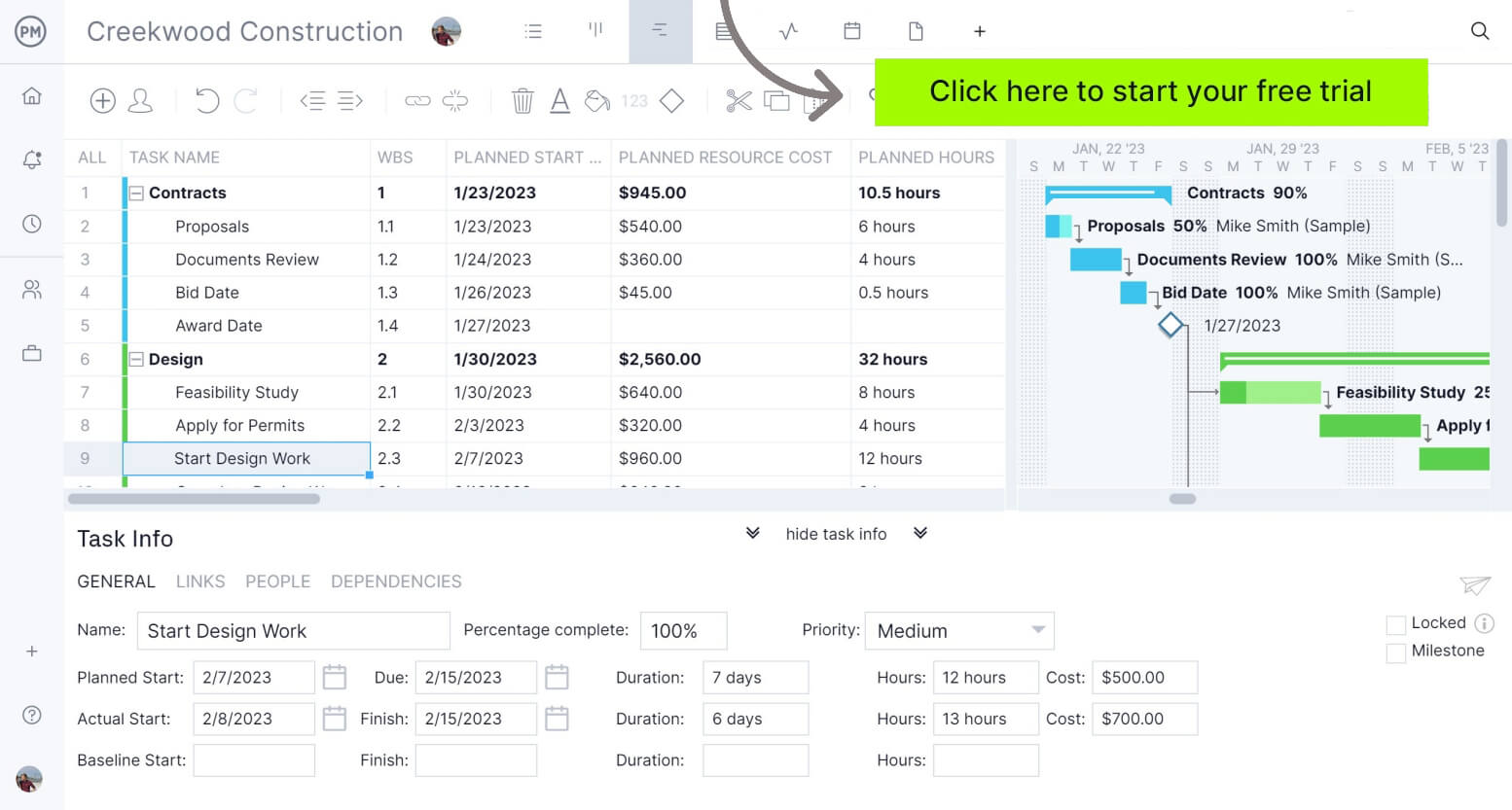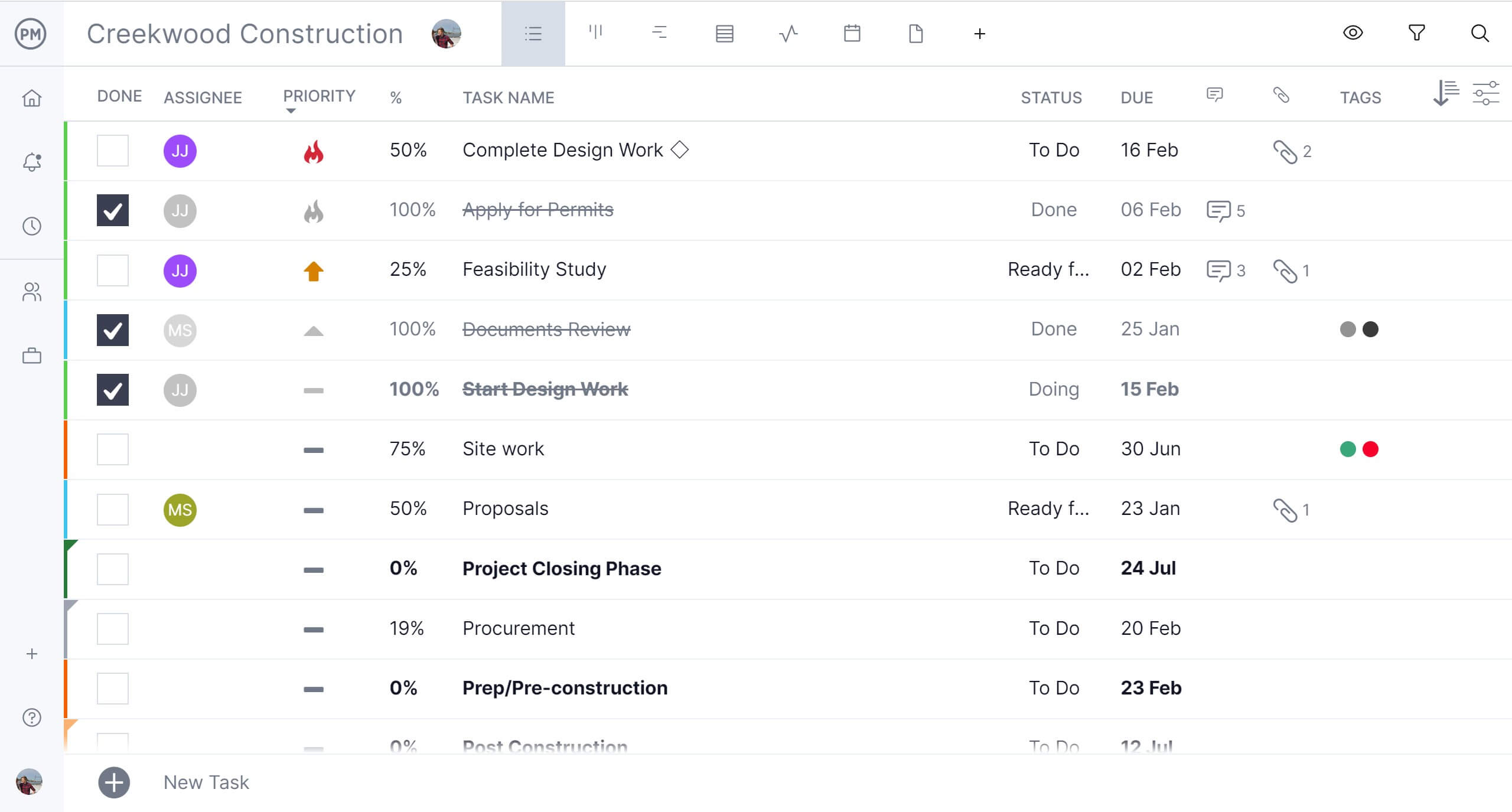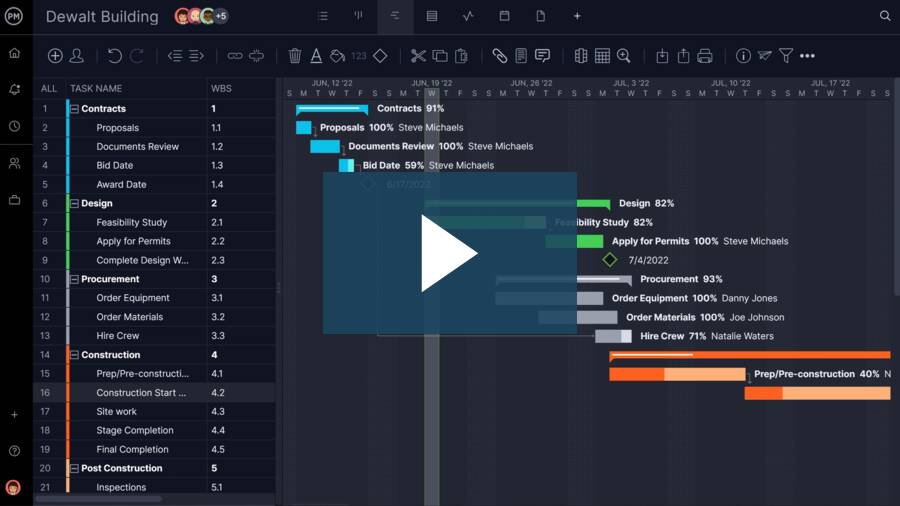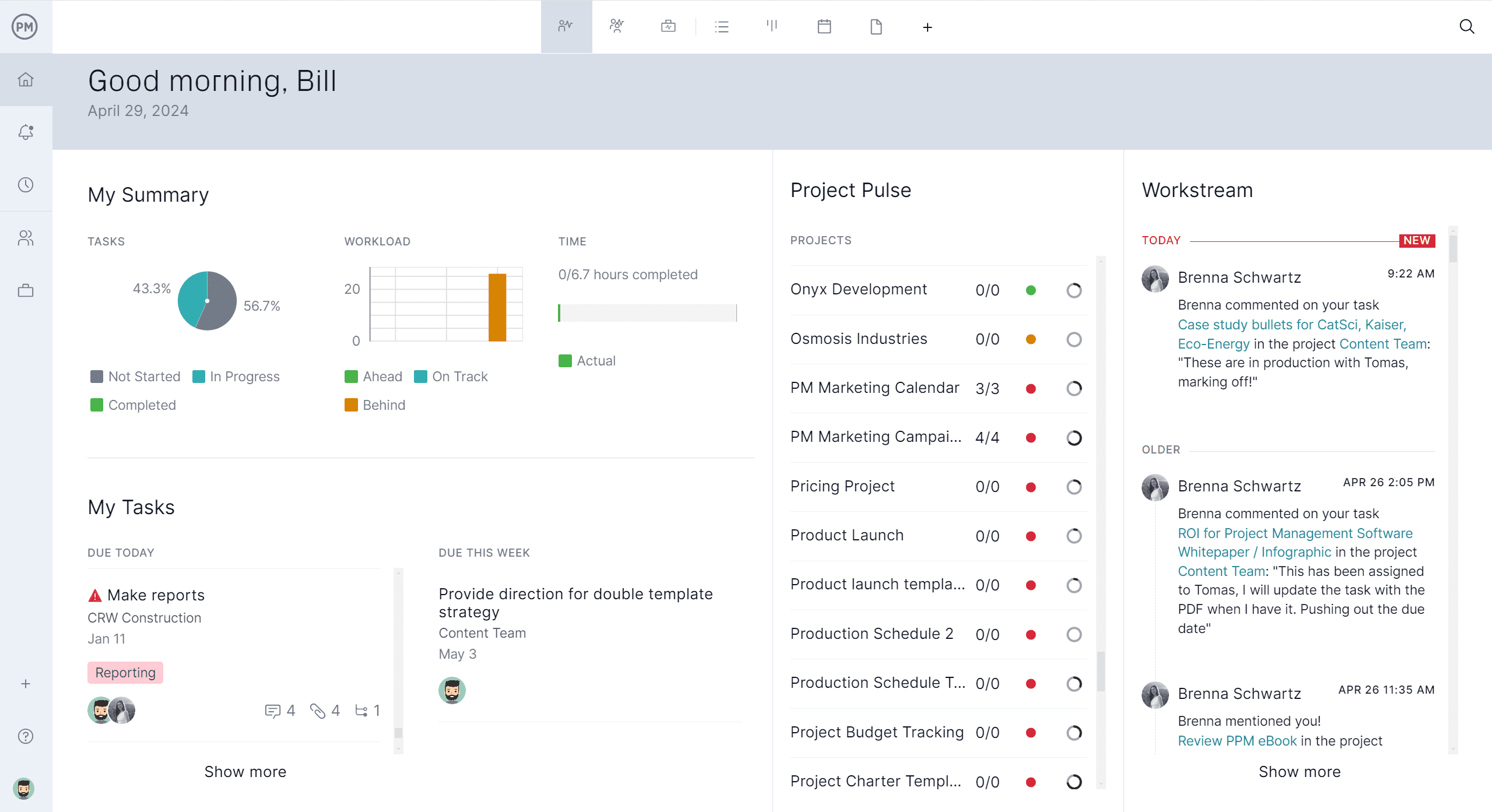Construction projects require careful coordination to stay on schedule and within budget. Among various planning methods, pull planning stands out as a collaborative, lean-based approach. It helps teams identify dependencies and align tasks based on the project’s final milestones. In this blog, we’ll explain how pull planning works in construction, walk through the key steps in the process, and highlight its benefits for scheduling, teamwork and project reliability.
What Is Pull Planning in Construction Project Management?
Pull planning is a construction scheduling technique rooted in Lean principles. It works by starting from the end goal and planning tasks backward to ensure every activity has the required prerequisites in place. Trade partners and team members collaborate to sequence work based on actual constraints rather than assumptions. This method increases schedule reliability, improves coordination among trades and helps identify potential delays early, enabling teams to build a realistic and executable construction plan.
Pull planning emphasizes team input and real-world constraints, ensuring that each activity is ready to be executed when scheduled. Once these commitments are established, they can be translated into a Gantt chart to visualize the entire plan, track dependencies and manage progress over time.
ProjectManager’s Gantt chart is ideal for supporting pull planning because it’s interactive, flexible and fully integrated with other project tools. Teams can easily drag and drop tasks, link all four types of task dependencies and update timelines in real time as field conditions change or new information emerges.
With built-in resource management, real-time dashboards and automatic syncing across views, our software ensures that the collaborative pull plan becomes a living schedule that drives on-site execution and keeps the project aligned from planning to completion. Get started with ProjectManager today for free.

Benefits of Pull Planning in Construction Projects
Pull planning offers several advantages that make it a valuable method for managing construction schedules. Involving stakeholders early enhances team accountability, improves workflow sequencing and minimizes costly delays due to miscommunication or last-minute plan changes.
Facilitates Trade Coordination
Pull planning encourages collaboration among all trade partners by involving them in the scheduling process from the start. Each team contributes input on when their tasks can realistically begin based on dependencies. For example, electricians can’t start wiring until drywall is up. Through backward planning, everyone aligns on task readiness, reducing clashes and overlaps. This shared understanding helps create a synchronized workflow where each trade commits to achievable dates, making the project more predictable and efficient.
Involves Participants at the Field Level
Pull planning actively engages field-level personnel such as foremen and crew leads in scheduling. Since they’re closest to the work, their input ensures plans are grounded in on-site realities. This improves accuracy and buy-in from the start. Field involvement helps surface potential issues early, such as material availability or safety concerns, and fosters a sense of ownership.
Holds Team Members Accountable
Pull planning builds accountability by having team members commit to specific tasks and deadlines during planning sessions. Because the schedule is developed collaboratively, everyone has a voice in setting dates and expectations. These commitments are visible to the entire team, increasing peer accountability and reducing the likelihood of missed deadlines. When each trade understands how their delays affect others, they’re more motivated to stay on track. This transparent environment leads to better follow-through and more reliable project delivery.
Related: 18 Best Construction Scheduling Software of 2025
Breaks Projects Into Milestones
Pull planning breaks the construction scope into manageable milestones, each representing a key deliverable or phase. These milestones act as checkpoints to guide backward planning and help sequence tasks more effectively. Working toward smaller goals makes it easier to measure progress, identify dependencies and adjust schedules if issues arise. This milestone-driven structure helps teams stay focused and aligned, ensuring everyone understands the path to project completion while allowing flexibility to manage changes or delays proactively.
Considers Constraints for Realistic Timelines
Pull planning emphasizes the identification and removal of constraints that could impact task execution. These might include incomplete designs, material shortages or required inspections. During planning sessions, team members highlight these blockers so they can be addressed before work begins. This ensures only “ready” tasks are scheduled, improving overall reliability. By building timelines based on real-world limitations rather than ideal conditions, pull planning reduces delays, improves sequencing and creates a more achievable project schedule.
Who Participates in the Pull Planning Process?
The pull planning process relies on collaboration between field and office personnel to build reliable schedules. Each role brings a different perspective, from hands-on execution to project oversight. Below are the key participants in pull planning sessions and how they contribute to improving construction planning and coordination.
- Trade Foremen: Represent their crews and provide insight into task durations, sequencing and readiness. They understand the daily realities of construction and help ensure that schedules reflect what’s feasible in the field. Their participation promotes commitment to agreed-upon tasks and helps prevent misalignment between trades.
- Construction Superintendent: Oversees daily on-site activities and ensures that the plan created during pull sessions is implemented effectively. They coordinate between trades, enforce safety protocols and track progress toward milestones. In pull planning, they help validate the sequence of work, identify constraints and ensure commitments are aligned with site logistics.
- Project Manager: The project manager facilitates the pull planning process and ensures alignment between the project schedule, scope and resources. They work closely with stakeholders to address constraints, manage change and support team commitments. In the context of pull planning, they help integrate trade input into the master plan and ensure schedule reliability.
- Subcontractors: Contribute to pull planning by identifying their task requirements, constraints and preferred work sequences. Their involvement ensures that trade-specific needs are accounted for in the plan. Active participation helps avoid conflicts, supports realistic scheduling and improves accountability across disciplines, leading to smoother coordination and fewer disruptions during execution.
- Project Engineer: Supports pull planning by providing technical input, reviewing drawings and identifying design-related constraints. They often assist with documentation and follow-up on action items from planning sessions. Their role is key in ensuring that information flows smoothly between the field and design teams.
How to Implement Pull Planning in a Construction Project
Pull planning is a structured, step-by-step process that begins with a clear goal and works backward to define the necessary tasks. The method helps create a reliable and efficient project schedule by organizing work based on realistic constraints and team input.
1. Identify a Project Milestone
The first step in pull planning is to select a specific project milestone, such as completing a floor slab or finishing interior framing. This milestone serves as the planning anchor. The team then breaks down the scope of work needed to reach that milestone, identifying all preceding activities and their logical order. This backward approach ensures that all dependencies are considered and that tasks are sequenced to meet the milestone on time with minimal disruptions.
2. Assemble a Team for the Completion of the Project Milestone
Once the milestone is defined, assemble a cross-functional team responsible for its delivery. This team typically includes trade foremen, subcontractors, the superintendent, the project manager and other relevant personnel.
Each participant contributes knowledge of their scope, identifies constraints and commits to task durations. Bringing together those directly involved ensures the plan reflects real field conditions and fosters ownership over the outcome. This collaboration is essential for building a realistic and executable plan.
Related: 32 Construction Documents (Templates Included)
3. Conduct a Pull Planning Session
A pull planning session is a collaborative meeting where project team members work backward from a milestone to sequence all required tasks. Each participant identifies the prerequisites for their work, helping build a schedule based on actual conditions rather than assumptions. These sessions improve coordination and create shared ownership of the plan.
To conduct a pull planning session, gather all relevant trade partners and stakeholders in one location. Use sticky notes or digital tools to map tasks in reverse order from the milestone. Discuss task durations, handoffs and constraints. Once the sequence is agreed upon, review the feasibility plan, confirm task readiness and document team commitments to move forward confidently.
4. Establish Commitments for Team Members
After sequencing tasks, the next step is to establish clear commitments from the individuals responsible for completing each activity. Each trade partner agrees to specific start dates, durations and prerequisites for their work.
These commitments are made publicly during the session, increasing accountability and encouraging follow-through. Documenting these promises helps ensure alignment across teams and provides a foundation for tracking progress. Commitment-based planning is what turns the pull plan into a reliable construction schedule.
5. Create a Phase Plan
A phase plan is a detailed construction schedule that outlines the sequence of work needed to achieve a specific milestone. It’s created after the pull planning session and reflects input from all trades. The phase plan provides a clear roadmap, aligning all team members on the activities and handoffs required for successful milestone completion.
To create a phase plan, use the output from the pull planning session to lay out tasks in chronological order. Assign responsibilities, confirm task durations and integrate constraints. The plan should include specific dates and buffer time where needed. Review it with all stakeholders to ensure buy-in and address gaps before execution begins.
Related: 20 Free Excel Construction Templates
6. Create a Look-Ahead Schedule
A look-ahead schedule is a short-term planning tool that focuses on the upcoming weeks of a project. It identifies the tasks that need to be ready, confirms their prerequisites and flags any potential constraints. This schedule helps ensure teams are prepared for upcoming work and allows time to resolve issues before they affect progress.
To make a look-ahead schedule, start by identifying all tasks scheduled in the next three to six weeks. Review their readiness by checking material availability, design completion and crew capacity. Highlight constraints that could delay work and assign responsibility for resolving them. Update the schedule regularly to reflect actual conditions and keep the project on track.
7. Conduct Weekly Coordination Meetings to Track Progress
Weekly coordination meetings are essential for maintaining progress and accountability in pull planning. These meetings bring all trade partners together to review the current phase plan, assess task completion and identify new constraints. Teams discuss what was planned versus what was done, adjust upcoming activities as needed and reinforce commitments. This routine feedback loop helps address issues early, promotes collaboration and keeps the plan aligned with real-world conditions, resulting in better control over the construction schedule.
Free Construction Project Management Templates
Pull planning in construction is but one aspect of the trade. For those in the industry, we offer free templates to help them with various planning tools. Below are just three of the over 100 free project management templates for Excel and Word. Use these to help with construction project management.
Punch List Template
Download this free punch list template to track incomplete, incorrect or unsatisfactory work that must be addressed before final project completion and handover. It includes a list of outstanding tasks, descriptions of each issue, responsible parties, deadlines for resolution and status updates. This template helps ensure accountability, improve quality control and facilitate a smooth closeout process by making sure all final details are completed to the client’s satisfaction before project sign-off.
Action Plan Template
Use this free action plan template to outline specific steps needed to achieve a goal, solve a problem or complete a task, including who is responsible, what resources are needed and when each step should be done. In construction, it helps break down complex objectives—like addressing safety issues, managing delays or improving quality—into clear, manageable actions. By organizing tasks with deadlines and accountability, an action plan template ensures better coordination, faster response to challenges and more effective execution on the job site.
Gantt Chart Template
This free Gantt chart template is a pre-formatted project scheduling tool that visually maps out construction tasks, their durations, start and end dates along a timeline. It helps project managers organize each phase of the build—such as site preparation, foundation, framing, inspections and finishing—into a clear, time-based sequence. This template allows teams to monitor progress, adjust schedules as needed and coordinate crews and subcontractors more effectively, helping to keep the construction project on track and aligned with deadlines.
ProjectManager Is an Advanced Construction Project Management Software
Unlike static templates, ProjectManager offers dynamic, real-time tools that make construction project management far more effective and responsive. For example, instead of manually updating spreadsheets, teams can rely on resource management tools like the team page to view each crew member’s roles, assignments and availability at a glance, ensuring the right people are scheduled for the right tasks.
The color-coded workload chart provides immediate visual feedback on who is over- or under-allocated, allowing site managers to quickly rebalance workloads and avoid delays or idle time. Combined with customizable availability settings, these features enable precise labor planning and on-the-fly adjustments that templates simply can’t match, keeping construction projects efficient, coordinated and on schedule.
Watch our short video below for more information on our construction project management software.
Manage Work With Multiple Construction Planning Views
ProjectManager’s multiple project views give construction teams the flexibility to manage work in the format that best fits their roles, with the list view being especially valuable for day-to-day execution. Unlike high-level Gantt charts and the sheet view or visual kanban boards and calendars, the list view offers a streamlined, task-by-task breakdown perfect for tracking punch lists, daily responsibilities or short-term milestones on the job site.
Each task can be assigned, prioritized, filtered and updated in real time, giving site managers and crew members a clear, actionable to-do list. With updates synced across all views, the list view ensures that field-level activity stays aligned with the master schedule, improving focus, accountability and coordination on construction projects.

Track Projects With Real-Time Dashboards, Reports and Timesheets
ProjectManager’s real-time dashboards, customizable reports and secure timesheets work together to provide powerful, accurate tracking throughout a construction project. The real-time dashboards instantly display up-to-date metrics on progress, task completion and resource allocation, giving managers immediate insight into what’s on track or falling behind.
Customizable reports allow teams to dive deeper into areas like budget performance, crew productivity or schedule variance—tailored to stakeholder needs. Meanwhile, secure timesheets ensure accurate logging of labor hours, feeding directly into both cost tracking and performance reports. Together, these tools create a live feedback loop that keeps construction teams informed, accountable and in control of project outcomes.
 Related Construction Project Management Content
Related Construction Project Management Content
For those who want to read more about construction project management and how it goes beyond pull planning, follow the links below to read recently published articles on process, phases, reporting and more.
- Construction Management: Process, Key Areas and Roles
- 20 Free Excel Construction Templates
- Construction Phases: Documentation, Templates & Steps
- 32 Construction Documents (Templates Included)
- Construction Reporting: Types of Construction Reports
- 14 Types of Construction Contracts: Pros, Cons & Best Practices
ProjectManager is award-winning project and portfolio management software that connects teams whether they’re in the office or on the job site. They can share files, comment at the task level and stay up to date with email and in-app notifications. Join teams at Avis, Nestle and Siemens who are using our software to deliver successful projects. Get started with ProjectManager today for free.




